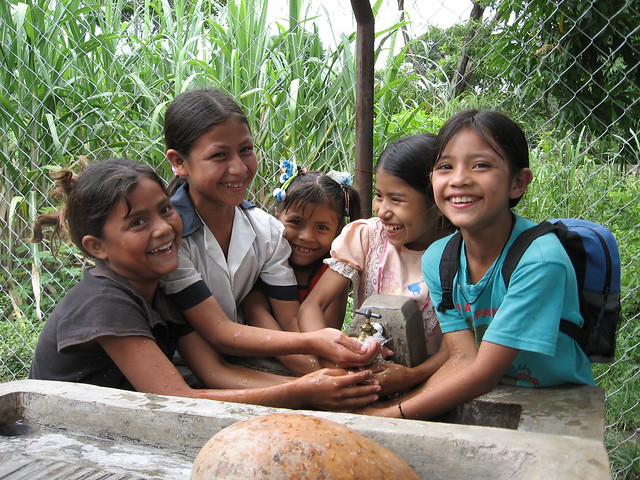Though Water.org and other organizations are seeing progress—“Over about the last 20 years, more than 2 billion people have gained access to water for the first time,” says Mr. White—the need remains desperate. One out of nine people worldwide lacks access to safe water. One of three lacks access to sanitation as basic as an outhouse.
On a trip to Central America decades ago, Mr. White recalled visiting a village that lacked clean water and being struck by “how many above-ground graves there were, and how small most of them were.” Sadly, those small graves are still erected today: Water-related disease continues to kill more children than AIDS, measles and malaria combined.
Beyond the human tragedy, this water crisis also carries a steep economic price tag. The World Health Organization estimates a lack of basic water and sanitation results in a loss of $260 billion in global productivity each year. This loss accrues in daily sacrifices borne disproportionately by women: Every day, women and children spend 200 million hours finding and collecting water for drinking, cooking and washing, while women and girls spend even more time—266 million hours—each day searching for somewhere to urinate or defecate. This is time not spent with their families, time not spent learning (and on average, each additional year of primary education increases a woman’s earning power by 15–25 percent), time not spent at a job—time which a simple toilet and/or faucet could reclaim.
The acerbic author and journalist H.L. Mencken wrote that “There is always a well-known solution to every human problem—neat, plausible, and wrong.” The neat, plausible solution for the water and sanitation crisis would seem to be to raise as much money as possible and then use it to drill wells and install toilets. But such a well-intentioned approach is often unsustainable. After wells are drilled, more money is needed to maintain them, beginning the seemingly endless cycle of raise-spend, raise-spend. It also smacks of paternalism for outsiders to build what they believe the poor need.
Such an approach can also prove lethal. If wells aren’t maintained, the water they yield can become contaminated and toxic; toilets that cease working can become a source of disease rather than a tool for better hygiene. One 2009 report by the International Institute for Environment and Development cited $360 million that had been wasted on water projects in rural Africa and 50,000 “water supply points” across the continent that were no longer accessible.
Frustration over flawed projects and disappointing results helps explain why water-related investments and grants are falling far short of what’s needed. To reach the UN’s goal of providing clean water and sanitation globally by 2030, the World Bank estimates that annual investments and grants would need to jump more than 10-fold, or almost $90 billion.
Meanwhile, rising temperatures raise the danger of catastrophic drought as expanding populations exacerbate water scarcity. Expecting budget-constrained governments to close the gap seems more hopeful than strategic; making philanthropic dollars stretch further is important but not sufficient. So the spotlight turns toward the private sector, with its unique incentives, its vast resources and its global reach.
This will trigger some understandable skepticism. If past money failed to solve the problem, why would future money fare better? The answer is that more money alone will not; but money handled with the discipline of the market can and will—and is.
“Addressing water and sanitation is, in many respects, about addressing a financing gap,” says Mr. White. “People living in poverty are willing to meet us halfway—if they can get access to affordable financing, they can basically become their own solution.”
“Imagine a slum in India,” says Mr. Damon. "The municipality in India is pumping water right underneath their feet and they’re just not connected to it. It’s going to the hotel down the street."

